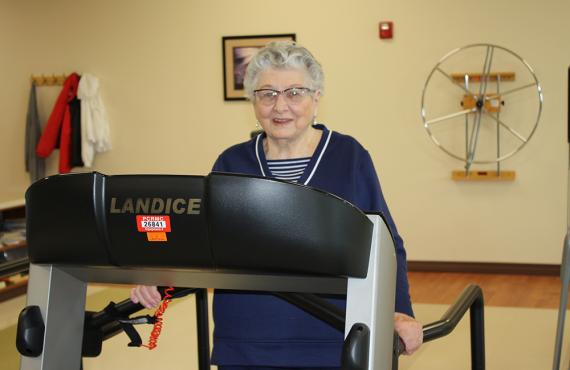Published on September 8, 2021
Read Time: Two Minutes
Heart disease remains the leading cause of death in the United States, and coronary artery disease is the most common form of heart disease. Someone in the United States has a heart attack every 40 seconds, according to some estimates.
Coronary artery disease occurs when the arteries that supply blood to the heart become narrow or clogged due to a buildup of plaque. This plaque is made up of mostly cholesterol.
Coronary artery disease puts a person at risk for heart attack, damage to the heart muscle and angina (chest pain due to reduced blood flow to the heart).
Common symptoms of coronary artery disease include pain or pressure in the chest; pain in the neck, jaw or arms; and shortness of breath. Symptoms can also include nausea, vomiting, sweating, racing heartbeat or dizziness.
If the arteries of the heart slowly become narrow, people may notice a chest pain called angina.
If there is a sudden rupture of the plaque, a blood clot may form in the artery. This blood clot could lead to a heart attack, which needs quick diagnosis and treatment.
Coronary artery disease can be detected through various tests, such as an electrocardiogram (ECG), stress test, CT scan or cardiac catheterization.
The goal for everyone should be to try to prevent issues from coronary artery disease before the condition becomes an issue.
High blood pressure, high cholesterol, diabetes and smoking are all risk factors for coronary artery disease. To lower your risk, try to maintain a healthy weight, exercise regularly and eat a plant-based, heart-healthy diet.
Once someone is diagnosed with coronary artery disease, the following types of medications can help manage the condition and prevent future problems:
- Medicines for high blood pressure
- Statins and other medicines for cholesterol
- Aspirin
- Medicines to relieve chest pain
Beyond medications, various procedures can help if the blockages in a person’s arteries are severe enough. These medical procedures include balloons that can open a blockage and stents, which are thin, mesh tubes that keep arteries open.
Some patients with coronary artery disease may have to undergo a coronary artery bypass graft surgery, which is open-heart surgery. During this operation, another blood vessel is attached above and below the blockage to bypass or reroute the blood around the clogged area.
Each of these procedures have their own risks and benefits.
Anyone who has risk factors for coronary artery disease or has been diagnosed with the condition should consult with a cardiologist to help reduce their risk of heart disease in the future.
Keep Your Heart Healthy
Learn more about cardiology and heart care services at Phelps Health or call the Phelps Health Heart and Vascular Center at (573) 308-1301.

